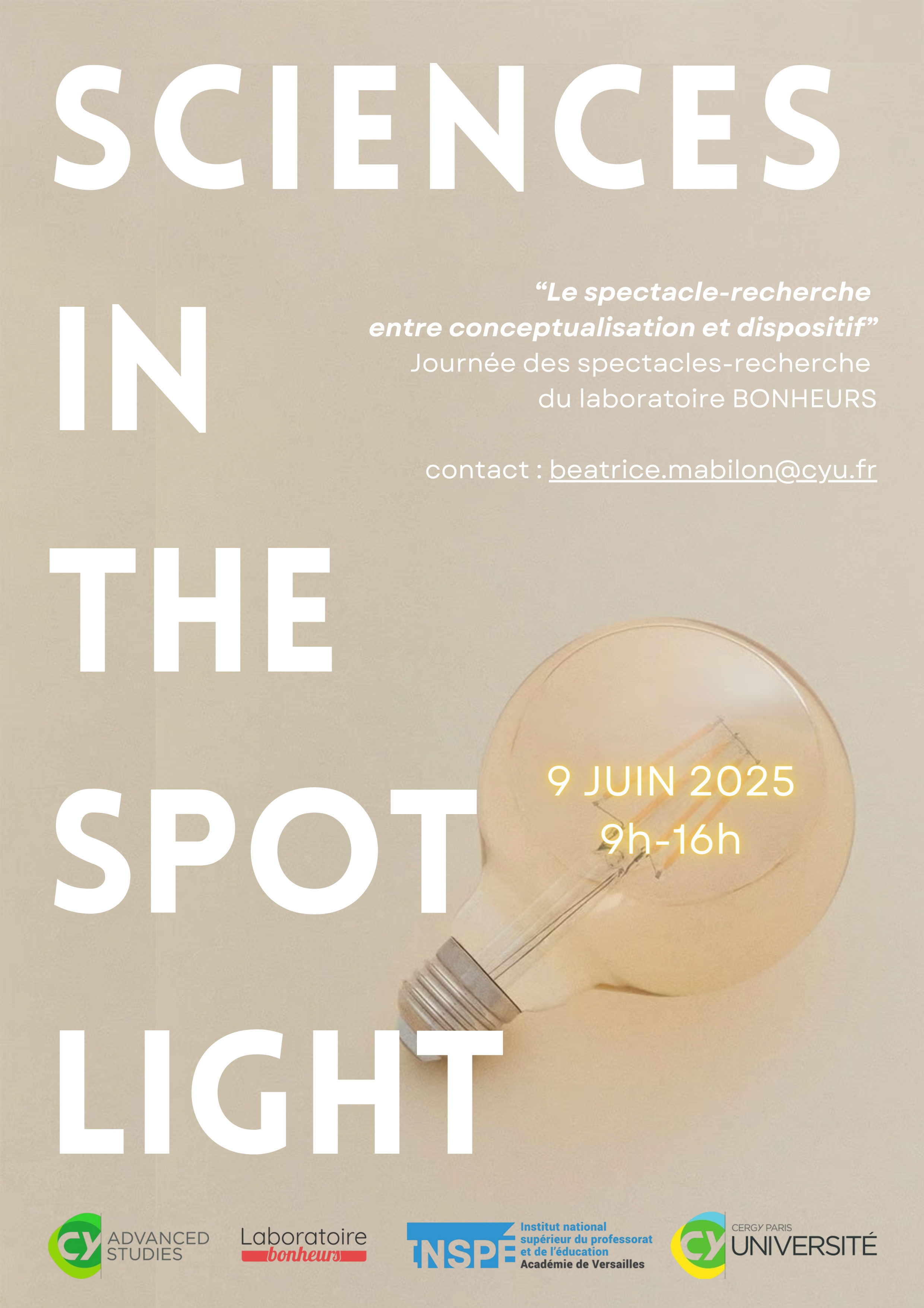The research show between conceptualization and device

International meeting coordinated by Béatrice Mabillon-Bonfils from Bonheurs research center.
Social sciences and the arts give meaning to the world: the aim is to transform spectators into subjects who think about the world. The question of sharing knowledge, as much as the notion of sensitive knowledge (Rancière, 2000), calls into question our ways of understanding the world, and the Cartesian dichotomy between reason and emotion can be rethought (Damasio, 2010). This is the aim of the research-show, in line with the creation theses. Research shows, the interface between research and art, are precisely those initiatives conceived by the BONHEURS laboratory to link art and science, with the aim of overcoming the dichotomy between “cold” objectivity and the creative imagination, to share knowledge in a different way, and to report on research results using a specific and original device. The research show is based on the mobilization of an artistic form (theater, comics, song, video, novel, humor, dance, photography, etc.) to communicate certain research results. Initially conceived as an alternative means of disseminating/sharing science, with researchers seeking to acculturate and raise awareness among a given audience in a different way, the research-show was later diverted from its original function to become a teaching tool, with students asked to create a research-show on a field of knowledge they had not previously mastered. But it is also mobilized as a research device.
This performance-research device conceptualized by the laboratory will be put into action by a series of performance-research shows based on the work of Rebecca Shankland , a member of the Institut Universitaire d France and a psychology researcher at the Université Lumière-Lyon II.

